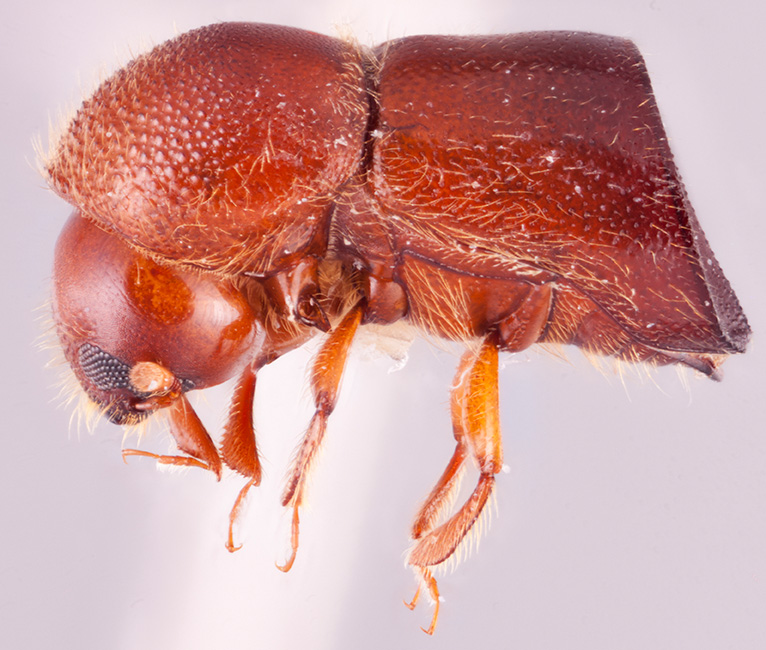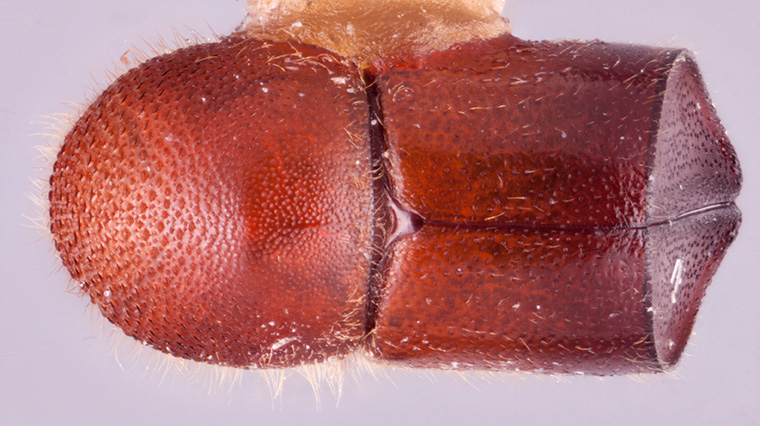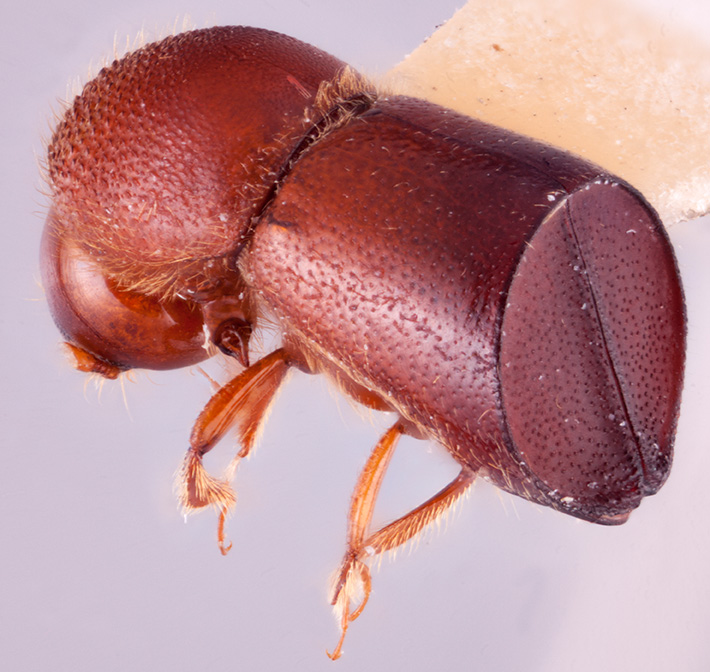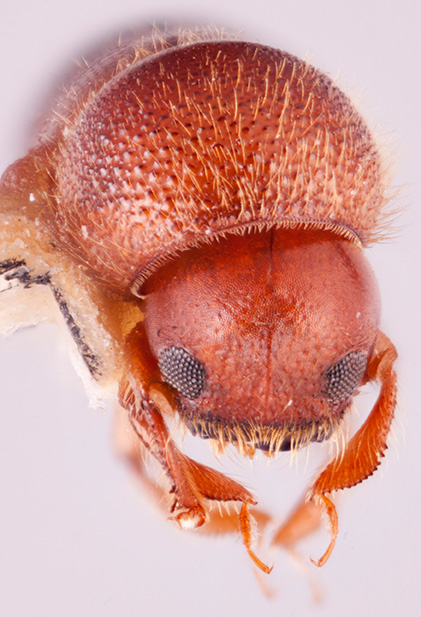Xylosandrus bellinsulanus
|
Xylosandrus bellinsulanus holotype lateral; R.K. Osborn |
|
Xylosandrus bellinsulanus holotype dorsal; R.K. Osborn |
|
Xylosandrus bellinsulanus holotype declivity; R.K. Osborn |
|
Xylosandrus bellinsulanus holotype frontal; R.K. Osborn |
Taxonomic history
Xylosandrus bellinsulanus Smith, Beaver & Cognato 2020 (in Smith et al. 2020bSmith et al. 2020b:
Smith SM, Beaver RA, and Cognato AI. 2020b. A monograph of the Xyleborini (Coleoptera, Curculionidae, Scolytinae) of the Indochinese Peninsula (except Malaysia) and China. ZooKeys 983: 1-442. https://doi.org/10.3897/zookeys.983.52630): 390.
Diagnosis
3.9 mm long (n = 1); 2.16 times as long as wide. This species can be distinguished by its large size; lower part of eye larger than upper part; elytralelytral:
'pertaining to the elytra
discdisc:
the flat central upper surface of any body part (e.g. pronotum and elytra) ascending apically, longer than declivitydeclivity:
ascending apically, longer than declivitydeclivity:
downward slope of either the pronotum or elytra
 ; declivitaldeclivital:
; declivitaldeclivital:
pertaining to the elytral declivity
face steep, abruptly separated from discdisc:
the flat central upper surface of any body part (e.g. pronotum and elytra) ; elytraelytron:
; elytraelytron:
'
the two sclerotized forewings of beetles that protect and cover the flight wings
appearing truncatetruncate:
appearing cut off or suddenly shortened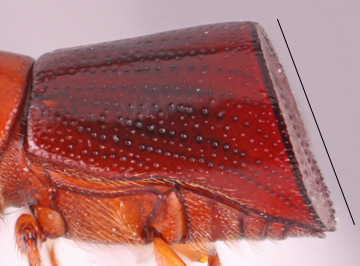 ; posterolateralposterolateral:
; posterolateralposterolateral:
'relating to end of the side part/portion
 margins of elytraelytron:
margins of elytraelytron:
'
the two sclerotized forewings of beetles that protect and cover the flight wings
carinate to suture forming a circumdeclivital ringcircumdeclivital ring:
a costa that completely encircles the elytral declivity
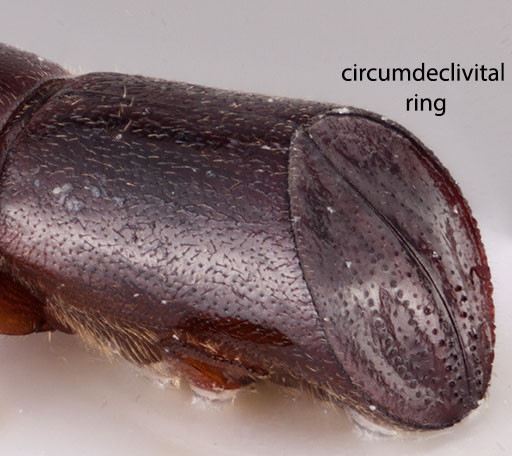 ; declivitaldeclivital:
; declivitaldeclivital:
pertaining to the elytral declivity
face flat, strongly shagreenedshagreened:
covered with a closely-set roughness, like shark skin'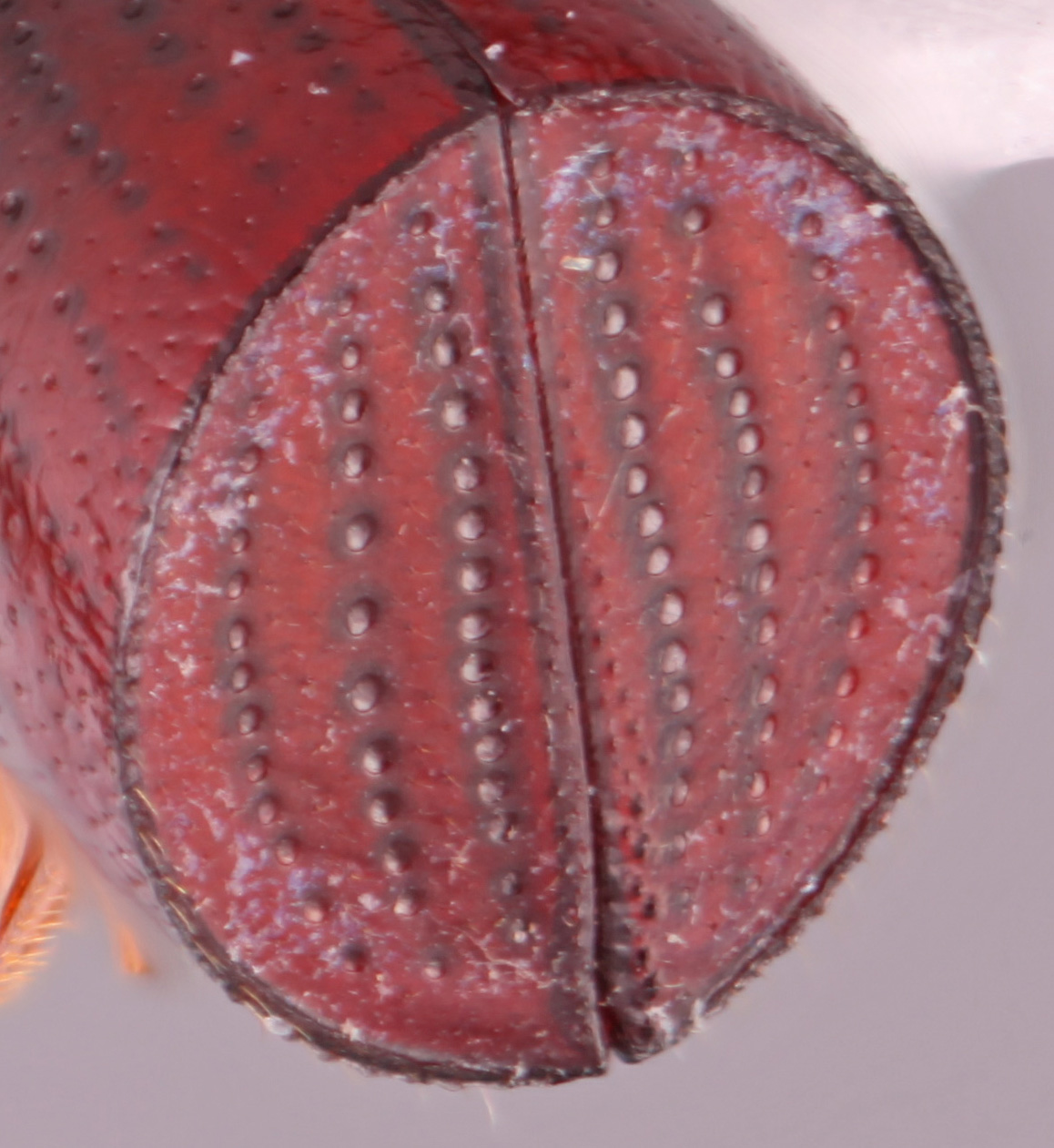 , dull, glabrousglabrous:
, dull, glabrousglabrous:
'smooth, devoid of vestiture
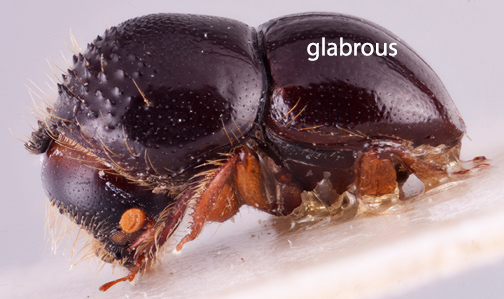 , no striaestria:
, no striaestria:
punctures in rows, which may or may not be impressed to make grooves visible, impunctate; sutural margin costate, costacosta:
visible, impunctate; sutural margin costate, costacosta:
elevated ridge that is rounded at its crest, not necessarily with sharp appearance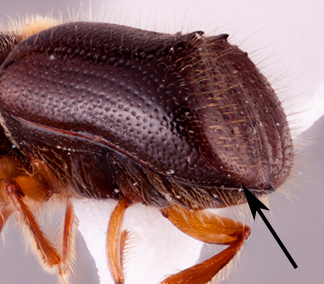 increasing in height and size from basebase:
increasing in height and size from basebase:
point or edge closest to the body; opposite of apex to apexapex:
to apexapex:
point or edge furthest from the body; opposite of base
 , declivitaldeclivital:
, declivitaldeclivital:
pertaining to the elytral declivity
striae and interstrial punctures replaced by confusedconfused:
of markings, having indefinite outlines or running together as lines or spots without definite pattern; usually referring to punctures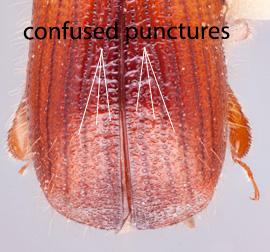 granules, granulesgranule:
granules, granulesgranule:
'a small rounded protuberance, like grains of sand
 more abundant near apexapex:
more abundant near apexapex:
point or edge furthest from the body; opposite of base
 (especially between interstriaeinterstria:
(especially between interstriaeinterstria:
'longitudinal spaces along the elytra between the striae, which is not as<br />
impressed and bear smaller punctures.
 1 and 2); posterolateralposterolateral:
1 and 2); posterolateralposterolateral:
'relating to end of the side part/portion
 margin granulategranulate:
margin granulategranulate:
'pertaining to a coarse, grainy surface texture'
 ; pronotumpronotum:
; pronotumpronotum:
'the dorsal surface of the thorax
wider than long, from dorsaldorsal:
'of or relating to the upper surface; opposite of ventral
 view rounded (type 1) and laterallateral:
view rounded (type 1) and laterallateral:
'pertaining to the side
 view basic (type 0), summitsummit:
view basic (type 0), summitsummit:
highest point, used for pronotum and elytra, denotes the peak between pronotal frontal slope and disc, and between elytral disc and declivity at midpoint, basalbase:
at midpoint, basalbase:
point or edge closest to the body; opposite of apex half shiningshining:
half shiningshining:
appearing glossy or bright in luster; referring to a surface that is polished and reflects light well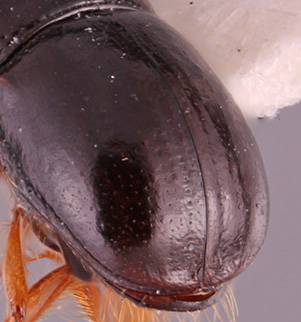 , densely punctatepunctate:
, densely punctatepunctate:
'set with fine impressed points, appearing as pin pricks
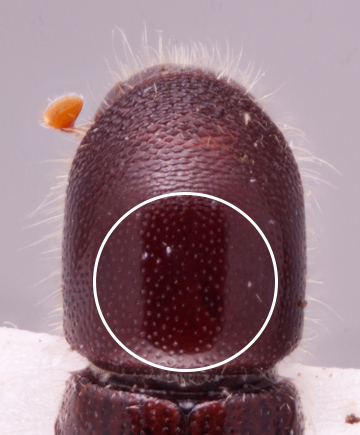 ; and broad, dense mycangial tuftmycangial tuft:
; and broad, dense mycangial tuftmycangial tuft:
'tuft of setae that denotes the mycangia exterior opening
 on the pronotalpronotal:
on the pronotalpronotal:
'pertaining to the pronotum
basebase:
point or edge closest to the body; opposite of apex .
.
May be confused with
Amasa spp., Xylosandrus amputatus, X. mancus, and X. trunculus
Distribution
China (Hainan), Laos
Host plants
unknown (Smith et al. 2020bSmith et al. 2020b:
Smith SM, Beaver RA, and Cognato AI. 2020b. A monograph of the Xyleborini (Coleoptera, Curculionidae, Scolytinae) of the Indochinese Peninsula (except Malaysia) and China. ZooKeys 983: 1-442. https://doi.org/10.3897/zookeys.983.52630)
DNA data
specimens not available for sequencing

